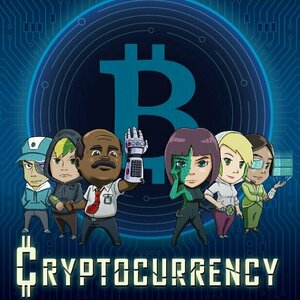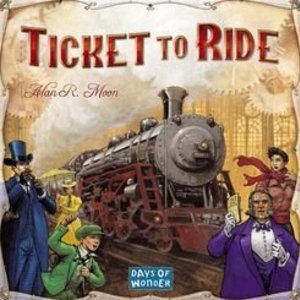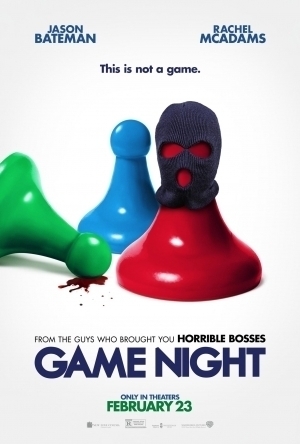
SIEGE: TITAN WARS
Games
App
"The game is fun! I'm on board!" - NickatNyte “A unique experience. This game is great!” -...

AirTycoon 4
Games
App
Welcome to AirTycoon 4! - Authentic turn based airline management simulation single player game...
Purple Phoenix Games (2266 KP) rated Cryptocurrency in Tabletop Games
Apr 2, 2020
You are the CEO of a fin-tech startup company. Leading a team of specialized experts, you will evaluate, trade, and mine different cryptocurrencies. Strategy is key, as you must stay ahead of the trend to maximize your earnings from the market. Can you solve the right algorithms and manipulate the network to help create the most wealth for your company? Or will you be scammed into buying worthless cryptocurrency? Play to find out!
Disclaimer: We were provided a copy of this game for the purposes of this review. This game is available to purchase, so the components seen in the pictures are what come with the game. I do not intend to rehash the entire rulebook in this review, but rather provide the basic ruleset and general gameplay overview of the game. Feel free to pick up a copy of the game directly from the publisher or your FLGS! -L
Cryptocurrency is a game of commodity speculation, action points, trading, and a little push your luck in which players are trying to amass the most amount of money over 5 rounds. To setup the game, place the Cryptocurrency Info Boards in the center of the play area, and place the Market Board next to them. Prepare and distribute the Rumor cards, and create the Ongoing Transactions deck. Each player receives a player reference card, 3 Intern Expert cards, and a total of 6 Wonga (the currency of the game). The game is now ready to begin! Each round is broken up into 4 phases: Prep, Action, Upkeep, and Rumor. During the Prep phase, each player (in turn order) must draw a Rumor card, and may hire a new Expert or take a loan. Experts are hired (purchased) from the Job Seekers pile, and often provide special abilities or increased Action Points. Hired Experts must replace one Expert from their existing team. Your team can only have 3 Experts, so choose wisely who to hire and fire! A loan can be taken to immediately gain 8 Wonga, but interest must be paid for the loan later in the round. After each player has performed these actions, play moves to the second phase.
During the Action phase, players take turns performing one of two actions: Mining or Trading. These actions are performed by spending Action points – each Expert offers a certain number of points to spend. Once you use an Action Point, that Expert is exhausted and can no longer work in this phase. To Mine, players choose one of the 4 available cryptocurrencies to mine (research), and will either Succeed or Fail in this endeavor. If you succeed, you create and earn coins from that specific cryptocurrency, as well as any extra money earned from completing ongoing transactions. If you fail, your turn immediately ends. To take the Trade action, players will either Buy or Sell coins to/from the Market. You are only allowed to buy/sell the same cryptocurrency each turn, and you may buy/sell up to 4 coins each turn. For every 4 coins bought, the Market Board shifts to increase that currency’s price by 1 Wonga. For every 4 coins sold, the Market decreases by 1 Wonga. Once every player is out of Action Points, this phase is over.
In the Upkeep phase, players refresh all Experts, pay interest on any Loans, or completely pay off a Loan. The final phase, Rumor, moves in counter-clockwise order. Players take turns adding their secret Rumor card to the Rumor Track of one of the 4 cryptocurrencies. The market values are adjusted based on the Rumors played, and any face-down Rumor cards will affect the end-game value of the currencies. Play then returns to the Prep phase, and continues until 5 rounds have been completed. Players determine which cryptocurrency was a scam, sell any remaining coins, and then count up their money. The player with the most Wonga is the winner!
I have to admit that Cryptocurrency surprised me. After reading the rules and getting the game setup, I was feeling a little overwhelmed. I was prepping myself for a complicated, quasi-educational game in which I would be relatively unengaged and going through the motions each turn. What I got, however, was the complete opposite. Yes, there is a lot going on in this game, but it offers so many different mechanics and strategies for success that you’re always thinking one step ahead. There’s the aspect of bluffing when it comes to Rumor cards and manipulating the market through those means, there’s drafting of new Experts and shedding your hand of lesser-powered cards, there’s push your luck in the Mining action as the more Action Points you spend, the more opportunity you have for success. There’s not one sure strategy to win, and you are changing and adapting on every turn. You also have to be paying attention to your opponents! Although there’s not really any direct player interaction, everything you do on your turn could throw a wrench in the plans of your neighbor. Can you figure out how they’re trying to play the Market? Or will you try to fly beneath the radar and throw them off your trail?
My biggest issue with this game has to do with components. The cryptocurrency boards and the market board all work together, but they are all their own separate components. So it just makes set-up/tear-down a little more involved because instead of laying out 1 big board and adding components to it, you have to lay out and populate 5 individual boards. It just makes it a little more tedious than I would like, but honestly it has no bearing on the gameplay at all. The quality of the components is pretty good overall, the artwork is tech-influenced and fun, and the cardboard coins are nice and sturdy. So all in all, a pretty good production quality.
So what are my thoughts on Cryptocurrency? I actually liked it more than I thought I would. It’s engaging and strategic, yet relatively simple enough that it doesn’t feel like too much of a brain burner. I am no cryptocurrency expert by any means, but I feel like after playing this game, I have a better understanding of it and how it works. So mission accomplished, Captial Gains Studio – you have a fun AND educational game here. Is it one I will pull out at every game night? No. But it’s one that I am looking forward to playing again in the future. Purple Phoenix Games gives Cryptocurrency an economic 8 / 12.
Purple Phoenix Games (2266 KP) rated Ticket to Ride in Tabletop Games
Jan 9, 2020
Ticket to Ride is one of those games that has really hit it big in the mass market. You can find it all over in big box stores, in FLGS, online, secondary market, just everywhere. But why? And for this long? Ticket to Ride (TTR) came out in 2004. A mere 15 years ago. While that doesn’t really sound like a long time, in contrast to today’s game industry it is an eternity. With thousands upon thousands of games being released into the market through direct publish, Kickstarter/crowd funding, and big releases at conventions it’s hard to believe that you can still find this hanging with the exciting, fresh new games.
What I truly believe is magical about this game is its simplicity. “You have two main options: take some cards or play some cards.” When you can start a teach of a game by saying that, your players are invested right away because they know you aren’t going to bog them down with rules upon rules. “If you decide to take cards you can take these colored train cards or you can take new route ticket cards.” So now players have two choices from gaining cards. “If you decide to play cards you need to play cards of a color and number matching whichever route between two connecting cities on the map you like.” Done. The game is explained. Yeah, you can fight me about the endgame scoring stuff like longest route and whatnot, but for new gamers, you have explained this classic in three sentences. It’s so beautiful when a game allows you to teach it so quickly.
But that surely means that this is an easy game, right? With so few rules and such. Well, no. It’s not really “easy” at all. While your main rules are light, the strategy and tactics during play can cause feelings of joy and delight as well as frustration and concern as you see someone claim the route you need to connect to two cities on the map. Of course, you can’t explain that to your new players right away. You want them to experience these feelings organically and fully. It’s what makes TTR a really great game: having your well-laid plans just shot to smithereens by the guy who can’t tell the difference between the white train cars and the wild rainbow train cars.
DISCLAIMER: I play with the 1910 expansion, which is a MUST. The larger cards are way easier to play with. See photo below with comparisons from base game on bottom with the larger 1910 cards above. YMMV, but I will always play using this expansion. -T
Components. Let’s compare components to some current or newer games. The game board is laid out really well, and the artwork is sparse and not over-busy on the board. This is a HUGE plus for me. I like nothing more than for the board to offer thematic elements and feeling without pelting my eyes with too much distraction. The cards were a bad choice. Not because the art or the quality on them is bad – because that’s not what I am saying. The size of the cards was a poor choice. I did purchase the 1910 expansion and simply will not play my copy without it. I recently played TTR for GenCan’t 2019 at my FLGS with OG base cards and found myself dreaming of the 1910 cards. The score tracker discs are of industry-standard quality for scoring discs. The plastic train car pieces are still just as wonderful to handle and play with as are many other more modern components. Seriously just as good. TTR components (and really, most of the time Days of Wonder components in general) are really great.
So do I still enjoy playing it? You betcha, don’tcha know. I still love seeing the board in front of me, agonizing over the route tickets I am dealt, and trying to decide if I should go for the New York to Los Angeles, or keep it simple with multiple routes along the Mississippi River. I still love the panic that ensues when I see people hoarding train cards, just knowing that they will soon be on the attack and their train car collection will dwindle to almost endgame levels in too few rounds for me to complete my masterpiece. I guess I still really love it.
Is Ticket to Ride my favorite game? No. But I’ll tell you what. I hadn’t played it in a couple years, and after this weekend’s play, it has moved up on my list by several spaces. It still holds a special place in my heart, and also the hearts of my team. That’s why Purple Phoenix Games gives Ticket to Ride a retrospective 20 / 24. It’s still great!
The Marinated Meeple (1853 KP) rated Game Night (2018) in Movies
Jan 2, 2019
It would've taken almost no effort to include a few modern board games, like Ticket to Ride, 7 Wonders, Sushi Go, or Settlers of Catan.
All that said, I finally watched this film and enjoyed it for the most part. Rachel McAdams was awesome, and stole the show.... Batemen was himself and solid. The cop almost derailed the movie for me he was so creepy.
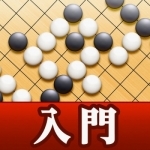
How to play Go "Beginner's Go"
Games and Education
App
Ishikura Noboru is a regular lecturer on the Japan Broadcasting Corporation's weekly TV go program....
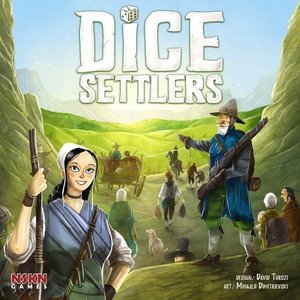
Dice Settlers
Tabletop Game
With a piece of land to call your own, a handful of resources, a few families and a head full of...
Boardgames Dicegames CivGames WildWestGames
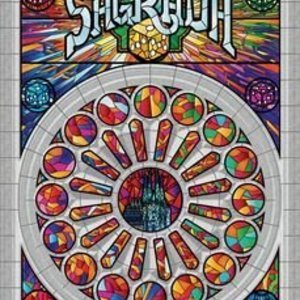
Sagrada
Tabletop Game
Draft dice and use the tools-of-the-trade in Sagrada to carefully construct your stained glass...
Boardgames
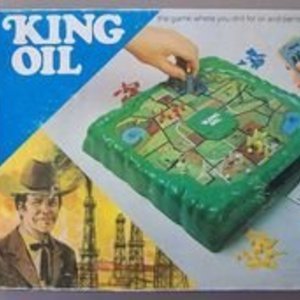
King Oil
Tabletop Game
This MB game comes with a plastic "board". Its size is dictated by the three randomizing discs...
Boardgames RetroGames
Purple Phoenix Games (2266 KP) rated Divinus in Tabletop Games
Aug 10, 2021
Divinus is a competitive tile placement, campaign, drafting, dice game in which players assume the roles of upcoming demigods fighting over the one last spot at the table. By appeasing the gods of the warring ancient Roman and Norse cultures players will earn their place among them. This game uses some interesting hybrid app-driven story mechanics along with legacy-style component alterations to create this world that is constantly under refurbishment and ripe for the claiming of the future Divinus.
DISCLAIMER: We were provided a prototype copy of this game for the purposes of this review. These are preview copy components, and I do not know for sure if the final components will be any different from these shown. Also, it is not my intention to detail every rule in the game, as there are just too many. You are invited to download the rulebook, back the game through the Gamefound campaign, or through any retailers stocking it after fulfillment. -T
To setup, place the main board on the table, sort out the Map tiles by player count, and populate the board per the rulebook. Each player chooses their Demigod box and takes all components contained within. As Divinus is intended to be played either as a scenario session or its Eternal Mode, which is infinitely replayable using the board and components already altered by previously-played scenarios, open the chosen Scenario Box to be played and allow the app to instruct on how to setup with these components. All players roll their dice and place them in the “ready” pile to be used on their first turn. The first player takes the token (a black meeple in the prototype version) and the game is ready to be played!
Divinus is played in turns starting with the first player and continuing around the table until one player places their final Map tile signaling the end of the game. On a turn, players will have a choice of using an Explore action or a Rest action. More actions may be available in future scenarios, but for the prototype scenarios, these are the two available choices. During an Explore action, the active player will choose any number of their rolled dice in order to create a mathematical equation that matches with one of the Map tiles on the main board. These spaces range from 1-12 in value, so an appropriate dice combination could be 5 + 4 – 1 = 8 in order to claim the Map tile on the 8 spot. Any number of dice can be used to claim tiles, and once a tile is claimed, it must be placed within the player’s personal play area map. In order to add these tiles, the edges will need to match up by terrain type with tiles already presently in play (see below), or may also be placed atop an existing tile. Map tiles may or may not contain symbols for factions, locations, and also Sacred Places. These will all be used in scenarios for different purposes.
Once a player decides they do not wish to (or cannot) take more Explore actions, they must Rest. To Rest, the active player reclaims all spent (and unspent ready) dice and rerolls them for the next turn, replacing empty spaces on the board with new Map tiles.
Play continues in this fashion of Exploring and Resting until one player places their 16th tile, thus completing their 4×4 personal map. Players will consult the app for scoring instructions and the winner will be announced. Should the players wish to play another scenario (or many, as we would have liked), they simply use the same Demigods and open a new Scenario Box. Inside these boxes are different gods to appease, new quests to fulfill (more on these later), and stickers to be applied to game components to improve their usefulness.
Components. Again, this is a prototype version of the game, and it includes two introductory scenarios, a bunch of sticker sheets, and a developmental app. That said, I really enjoyed my plays of the scenarios and they felt like great first steps to lure me into what I just know is going to be somewhat of a lifestyle game (assuming more and more expansions are in the plans). The sticker sheets are all fine, and as I understand it, the stickers that are placed on the Map tiles will have non-removable glue, but the stickers placed on the dice faces will have removable glue. As I am not a glue expert, I can’t really vouch for either. The app is somewhat similar to those that are used in the Chronicles of Crime series, but Divinus promises to deliver an app that can scan the components WITHOUT the use of QR codes. For those gamers who think the QRs are an eye-sore, then Divinus is taking a promising first step for you! I haven’t even touched on the artwork yet, and that’s usually my favorite aspect of a game’s components. The visual style and art on Divinus really make the game pop on the table, and just draw you into the lore and setting. I love it!
So while initially Divinus is a simple roll-and-draft game of building a 4×4 grid akin to Kingdomino, the addition and usage of the Quests and, later, the Charge Actions, morph this into something quite a bit meatier. Each Scenario Box (at least in this version) contains two god cards (that affect how the end of the scenario is scored) and some Quest cards (that are side-quests players can follow to earn some extra VP and other goodies). I imagine as the game progresses through Scenario Boxes that Quests will get more difficult and the god cards more interesting as well.
All in all Divinus has roped me in, and I am very much looking forward to all the other great things that Lucky Duck Games has planned for it. I can foresee soooooo many expansions being built on this excellent chassis, and I am very eager to finish the entire legacy aspect in order to play through the Eternal Mode a bunch of times. Can I divulge a little dirty secret of mine here? I have never before played any type of legacy board game, and if this is what they are like, then I will be breaking out my copy of Betrayal Legacy way sooner than I originally planned.
I believe that the theming here is great, the gameplay is relatively simple to grasp, and the hybrid app-driven story really adds to the entire experience. If you are someone who, like me, has yet to delve into legacy-style games where the components are constantly changing due to choices made at the table, and you have a penchant for dice games with a splash of ACTUAL math skills used, I urge you to take a look at backing Divinus on Gamefound ASAP. With just the initial two scenarios included, I am already addicted to the game and cannot wait to sink my teeth into more scenarios and more crucial decisions that will alter the landscape of my copy of the game. I know that as of the publish date of this preview, the campaign is already about 1000% funded and so many stretch goals have already been unlocked. It is a great time to hop on board and grab a big ol’ chunk of goodies for this one. You may have a preference for Roman or Norse mythology before playing, but be warned: your loyalties may change as a result of playing Divinus… or maybe you will learn to accept both at the harmonious center of activity in your own little section of the world.
